Every great story, like a book or a movie, has a good plan behind it. A sample narrative plan template helps make a good plan for the story.
This article talks about what a narrative plan template is, its parts, and why it’s helpful for storytelling.
What is a Narrative Plan?
A narrative plan is like a map for your story. It helps you know what will happen in your story. It’s like a friend who helps your story find its way. There are different ways to plan a story, like the three-act structure or the Hero’s Journey.
Parts of a Narrative Plan Template
A narrative plan template has different parts to help your story come together:
- Setting: This is where and when your story happens.
- Characters: These are the people in your story.
- Conflict: This is the problem that needs to be solved in your story.
- Plot: This is what happens in your story.
Tips for Using a Narrative Plan Template
A narrative plan template is like a treasure map that leads you to a great story. But how do you use it to make your story truly shine? Here are some tips!
Customize Your Template:
Your story is unique! Adjust the template to fit what your story needs. Your story may have more characters or different settings. Change the template to help your story tell itself.
Let Creativity Flow:
Don’t let the template lock up your creativity. It’s there to guide you, not control you. If a new idea pops up while writing, go with it! The template can always be updated.
Team Up with Others:
Two heads are better than one! Share your plan with friends, family, or other writers. They might offer valuable feedback that can make your story even better.
Don’t Rush:
Take your time to fill in the template. It’s important to think things through to make sure your story makes sense and is exciting to your readers.
Use Pictures and Drawings:
Sometimes, pictures say more than words. Draw or find pictures that inspire you or help explain your story.
Keep It Simple:
Don’t overcomplicate your template. Keep it simple so it’s easy to use and helps, not hinders your storytelling.
Use Technology:
There are many tools online that can help with your narrative planning. They can make updating and sharing your plan a breeze.
Review and Revise:
As your story develops, go back to your template. Update it with new ideas and make sure it’s helping your story stay strong and exciting.
Practice Makes Perfect:
The more you use narrative templates, the better you’ll get at planning your stories. Practice with different stories to become a narrative planning star!
Celebrate Your Progress:
As you fill in your template and your story takes shape, celebrate your progress. Every step forward is a step closer to your storytelling goals!
Sample Narrative Plan Template
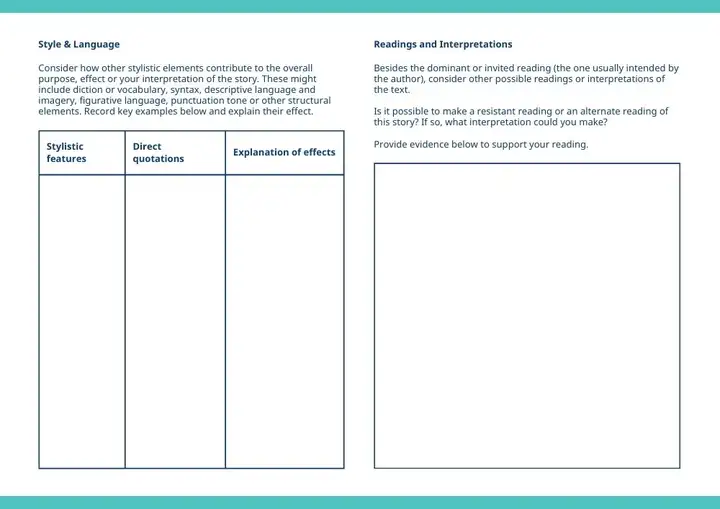
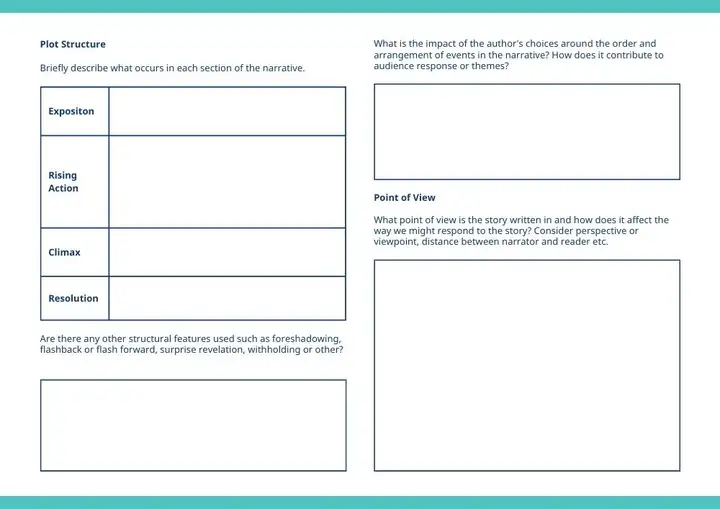
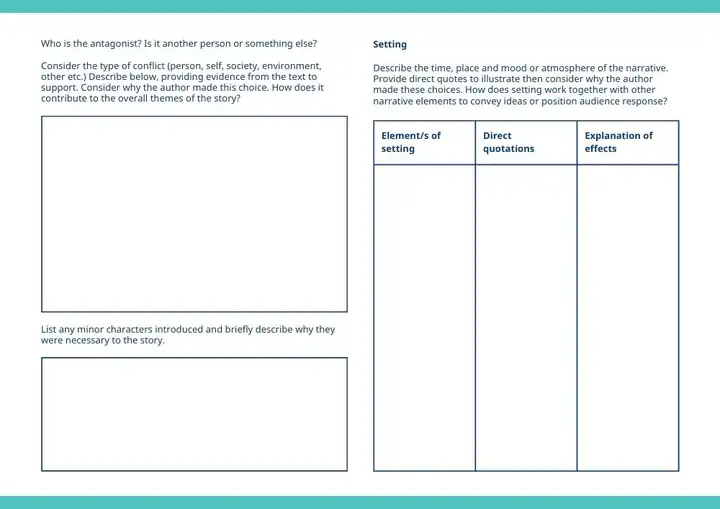
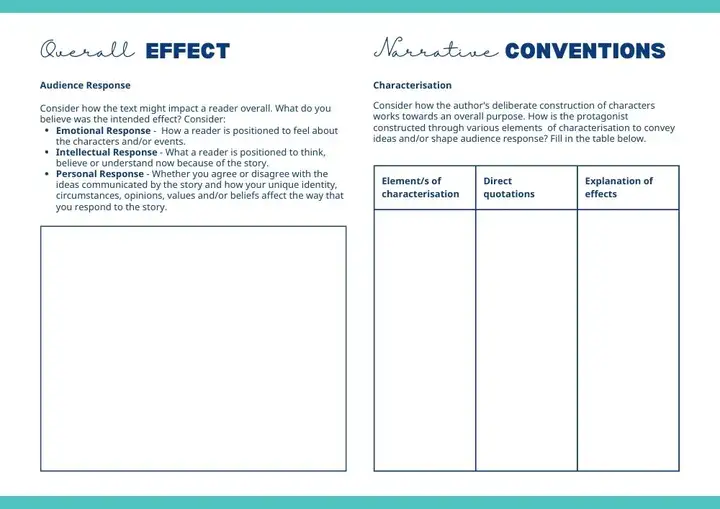
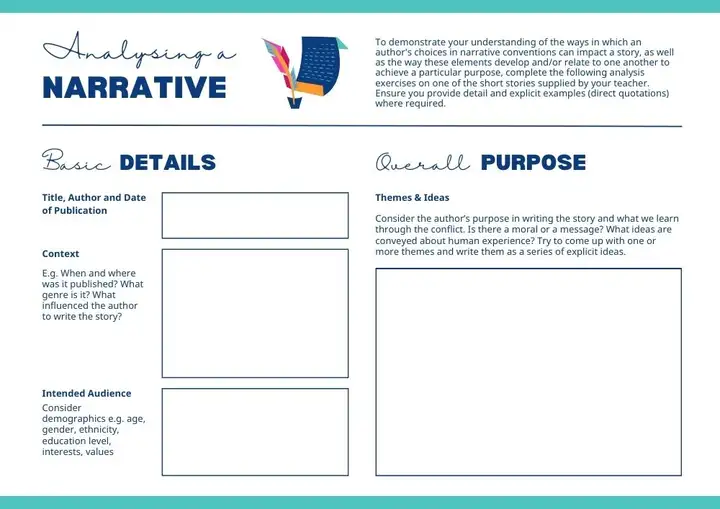
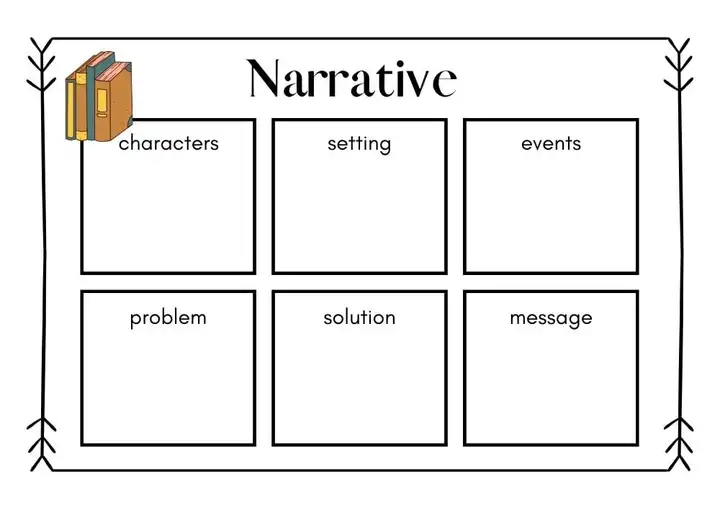
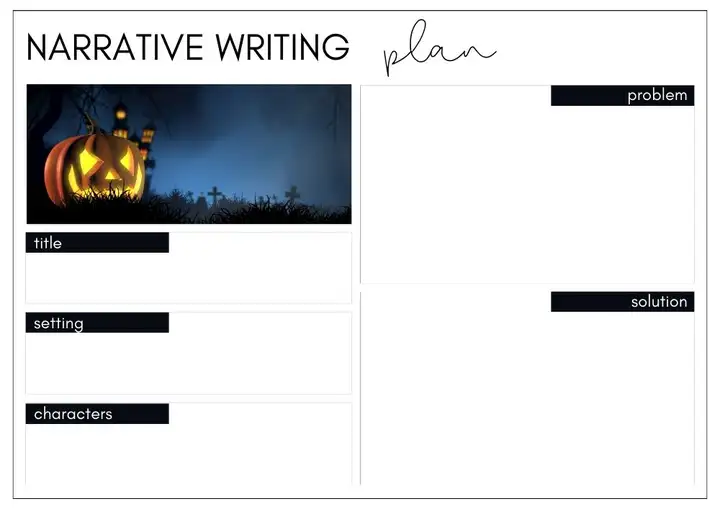
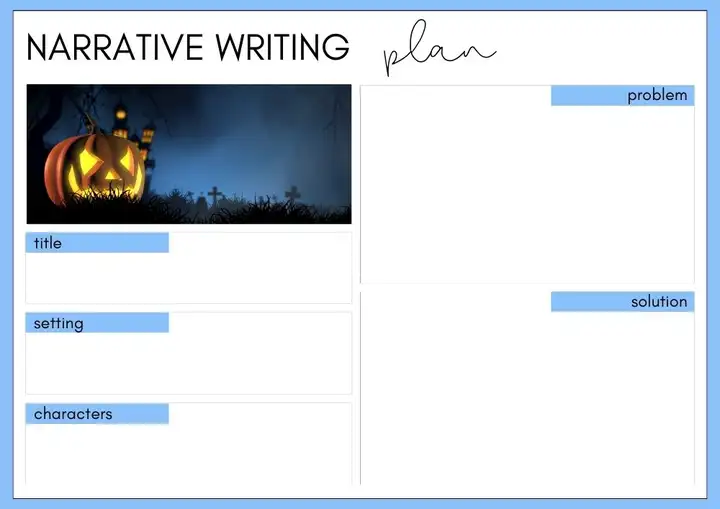
Digital Tools for Planning Your Story
Let’s delve into how these digital companions can be a boon for your storytelling journey.
Scrivener
What it offers: Scrivener is like a virtual writing room. It provides a space to jot down ideas, structure your narrative, and draft your story all in one place.
Notable Features:
- Corkboard View: Visualize your narrative structure using virtual index cards.
- Document Splitting: Work on different sections of your narrative simultaneously.
- Full-Screen Writing Mode: Free from distractions, focus solely on your story.
- Compile Feature: Export your narrative into various formats effortlessly.
Final Draft
Final Draft is a screenwriter’s best friend, but it’s also handy for novelists and playwrights. It provides a professional platform to draft, revise, and format your narrative.
Notable Features:
- SmartType: Remembering character names and auto-filling them for you.
- Story Map: A high-level view of your narrative’s structure.
- Collaboration: Work in real-time with others on your script.
Evernote
Evernote is like a digital filing cabinet. It’s great for jotting down ideas, saving resources, and organizing your narrative plan.
Notable Features:
- Notebooks: Organize your ideas, character profiles, and settings in different notebooks.
- Web Clipper: Save useful articles, images, and other resources from the web.
- Templates: Use or create templates for character profiles, settings, and plot outlines.
Trello
What it offers: Trello’s card and board system is a fantastic visual aid for planning your narrative.
Notable Features:
- Boards and Cards: Create a board for your narrative and cards for different plot points, characters, or settings.
- Labels and Checklists: Keep track of your progress and categorize your ideas.
- Collaboration: Invite others to view and contribute to your narrative plan.
Google Docs
Google Docs provides a simple, accessible platform for drafting and sharing your narrative.
Notable Features:
- Real-Time Collaboration: Share your document with others for real-time feedback.
- Voice Typing: Dictate your narrative or ideas easily.
- Revision History: Track changes and revert to previous versions if needed.
Common Mistakes and How to Avoid
Here’s a guide to avoiding those blunders ensuring a smooth narrative planning experience.
Over-Complication: Keep the template simple. A cluttered or overly complex template can stifle creativity and make planning a chore rather than a helpful exercise.
Rigidity: A narrative plan template should be flexible. Allow room for changes and evolution as the story develops.
Over-Planning: It’s essential to strike a balance between planning and spontaneity. Stay focused on planning so that you can handle the actual writing of your narrative.
Ignoring Feedback: Share your template with trusted individuals who can provide constructive feedback. Ignoring feedback can result in missed opportunities to refine and improve your narrative plan.
Skipping Character Development: Characters drive the story. Properly outlining your characters’ traits, motivations, and arcs can lead to a lackluster narrative.
Undefined Conflict: Every story needs a conflict to propel it forward. Failing to define the conflict in your narrative plan clearly can lead to a weak or aimless plot.
Ignoring Setting: The setting is where your story comes alive. Neglecting to flesh out the setting can result in a flat, unengaging narrative.
Failure to Revise: Your first draft of the narrative plan will likely need revising. Please revisit and revise your template to avoid inconsistencies and plot holes in your story.
Avoiding Technology: There are various digital tools available to aid in narrative planning. Avoiding these resources can make the planning process more tedious than it needs to be.
Lack of Practice: Narrative planning is a skill that improves with practice. Avoid the mistake of thinking you’ll master it on your first try.
Disregarding Genre Conventions: Every genre has certain conventions that readers expect.
Over-planning, needing to be more consistent, and delaying writing. It’s good to plan, but remember to start writing your story too!
FAQS
Why should I use a narrative plan template?
It helps in structuring your story, ensuring it has a clear beginning, middle, and end. It also helps in developing characters and settings, making the writing process smoother.
Can I customize my narrative plan template?
Every story is unique, and you can adjust the template to fit the needs of your narrative.
Where can I find narrative plan templates?
Many online resources, writing software, and storytelling apps offer narrative plan templates. You can also create your own based on what works best for you.
How detailed should my narrative plan be?
It depends on your preference. Some writers prefer a detailed plan, while others go for a broader outline. It’s all about what helps you tell your story best.
What should I do if I get stuck while filling out my template?
Take a break, seek inspiration, or discuss your ideas with others. It’s normal to feel stuck sometimes, but with a little patience and creativity, you’ll find your way.
Should I stick strictly to my narrative plan while writing?
Not necessarily. Plans are helpful, but it’s okay to deviate if new, exciting ideas come up as you write.
How can a narrative plan template help with revisions?
Having a structured plan makes it easier to spot areas that need revising. It also saves time as you have a clear outline of where changes are needed.
Can I share my narrative plan template with others?
Writing groups can provide valuable feedback that can improve your narrative.
Is a narrative plan template only for fiction writing?
It can be adapted for non-fiction, screenwriting, or any project that requires structured storytelling.
Conclusion
Planning your story well makes it more exciting and enjoyable. A narrative plan template is a great tool to help you start your storytelling journey.
So, get a narrative plan template and start crafting your awesome story! Through planning, take your story from good to fantastic, creating tales that all will love.